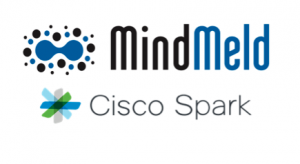 It’s Spring and thoughts in the C-Suites of Cisco naturally turn to the acquisition of leading-edge, collaboration-oriented telecommunications technologies. In April 1999, it started the ball rolling with acquisition of GeoTel which represented a giant step in the transformation from a provider of large scale switches and routers into one of the leaders in IP-based telephony. In May 2015, it sought further opportunities to add value to its communications fabric with the acquisition of Tropo, a company that spun out of cloud-based telephony services provider Voxeo to bring a broad list of in-call apps and a full “Communications Platform as a Service” (CPaaS) into Cisco’s Cognitive Collaboration and Spark services.
It’s Spring and thoughts in the C-Suites of Cisco naturally turn to the acquisition of leading-edge, collaboration-oriented telecommunications technologies. In April 1999, it started the ball rolling with acquisition of GeoTel which represented a giant step in the transformation from a provider of large scale switches and routers into one of the leaders in IP-based telephony. In May 2015, it sought further opportunities to add value to its communications fabric with the acquisition of Tropo, a company that spun out of cloud-based telephony services provider Voxeo to bring a broad list of in-call apps and a full “Communications Platform as a Service” (CPaaS) into Cisco’s Cognitive Collaboration and Spark services.
This year, the company does not disappoint. By December it will formally complete the $125 million acquisition of MindMeld (formerly ExpectLabs), whose CEO and founder Tim Tuttle has been one of the most eloquent proponents of using computers to understand what people say with human-like accuracy. As I reported in this post in December 2015, the company had already demonstrated that its technology could support automated self-service, at scale, for a variety of vertical industries, including voice and natural language-based self-service for cable operators, government agencies, automotive companies and content providers.
At the time Spotify, which has recently shown great chops in supporting personal “playlists” based on recognizing patterns in each individual’s listening habits, was one of the MindMeld’s featured customers.
At Cisco, MindMeld’s core engine will have a field day culling through the content of videoconferences to detect topics of interest and encourage more efficient collaboration. Putting a conversational “Bot” among attendees to business meetings to help with scheduling or “order a pizza” will be child’s play. Thinking of “real time” applications, MindMeld has demonstrated that it is a quick learner, capable of listening in on group conversations, discovering and categorizing the topics under discussion, conducting searches of large databases on behalf of participants and then suggesting actions that group members can take in order to complete their appointed tasks.
Cisco already has a relationship with IBM Watson to bring Cognitive Computing and Analytics to edge devices on Cisco-powered networks. This is a powerful capability with implications for optimizing network performance and enhancing the security of endpoints. But it should not be confused with the potential application of MindMeld’s cognitive capabilities to support conversational commerce and collaboration. As a cloud-based service with relatively mature APIs, it should not take long for MindMeld to be integrated with the resources that power Tropo. Adding conversational capabilities and understanding to powerful search and analytic tools is destined to improve the productivity of the teams communicating through Spark.
This is true “intelligent assistance” or “intelligence augmentation” and it starts with speech recognition and natural language processing, then improves with machine learning (as well as human-assisted learning) and analytics. It also has the potential to serve as a conversational front-end to the automated, self-service resources of Cisco’s Customer Collaboration platforms, meaning the Unified Contact Center for the Enterprise (UCCE).
Categories: Conversational Intelligence, Intelligent Assistants

 Getting It Right: What AI Agents Actually Mean for Customer Support (Webinar)
Getting It Right: What AI Agents Actually Mean for Customer Support (Webinar)  Beyond the Basics: How AI Is Transforming B2B Sales at TP
Beyond the Basics: How AI Is Transforming B2B Sales at TP  Five9 Launches Agentic CX: Toward AI Agents That Reason and Act
Five9 Launches Agentic CX: Toward AI Agents That Reason and Act  2025 Conversational AI Intelliview: Decision-Makers Guide to Self-Service & Enterprise Intelligent Assistants
2025 Conversational AI Intelliview: Decision-Makers Guide to Self-Service & Enterprise Intelligent Assistants